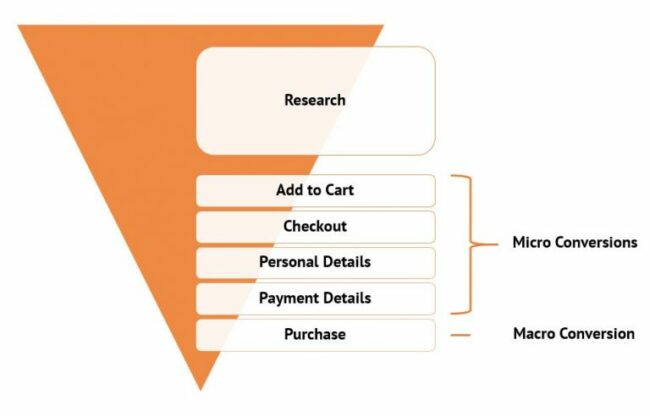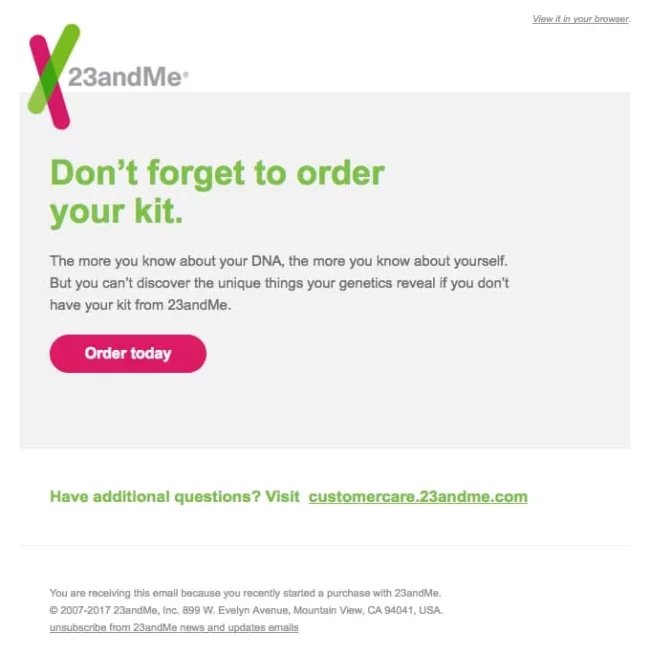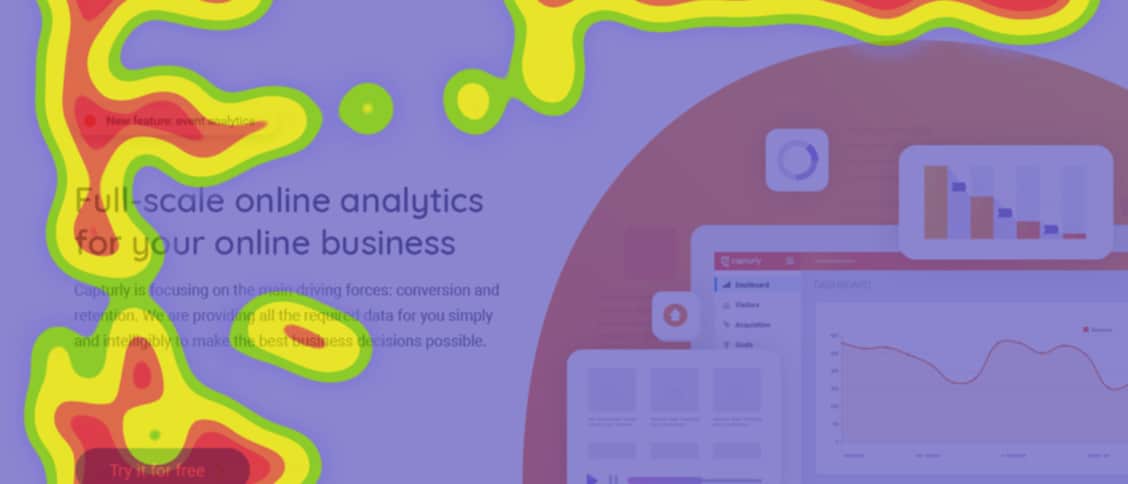If you’re reading this, you’ve likely already read how to drive traffic to your website. Hopefully, that digital strategy blueprint helped to give you a welcomed boost in traffic!
But the key question is this: has the boost in traffic led to a subsequent boost in sales?

Now that traffic is up and you have more potential customers coming to your website, it’s time to plan how you convert more of them into actual, paying customers. On average, 17% of people visiting your website plan to make a purchase but only 2% will follow through. You need a hyper-focused strategy to minimize that traffic attrition.
Because remember, the goal of more traffic is to get more business. More traffic alone won’t solve any of your actual business problems, but if you can convert it into revenue–you’re setting yourself up for long-lasting success.
Let’s also remember that when you scale the amount of traffic coming to your site you will likely see a decrease in your conversion rate. That is ok and it is normal. However, the trendline for conversions (and hopefully revenue) should be trending up, though likely not as fast as traffic.
So what do you do when you’re getting more traffic and you want to convert them into more customers?
Here are six major areas where you should focus attention:
Table of Contents
Build New Micro Conversions
When you start getting more traffic to your site you have essentially widened your conversion funnel. You’ve pushed and pushed and that top is widening, which means you are capturing more people at every stage of the buying cycle. You’re casting a wider net, pulling in more fish, and now you need to sort through the catch.
Some people are ready to buy from you right now. Any purchase is a macro conversion. That’s the ultimate goal and that’s what will make you money right now.

Some are familiar with you and what you have to offer but need a bit more convincing. Those people are potential money–but only if you can show them that your product or service meets their needs.
And the best way to meet their needs is to know who they are and speak with them directly. The best way to accomplish this is through micro conversions.
What is a Micro Conversion?
Micro conversions indicate that a customer is likely to convert through small steps or secondary actions taken on your website or other channels–such as social media.
Generally, these are not part of your site’s overall conversion rate (macro conversions), but micro conversions indicate that your funnel is effectively moving customers through your funnel towards a purchase.

Micro conversions can be a squeeze page that collects email addresses or phone numbers. Or a social media follow or share. It can be a newsletter sign-up or add-to-cart. Reading a blog post also counts! A micro conversion is a potential customer letting you know they are considering a purchase. At the very least, you piqued their interest.
During this courting process, you need to provide something of value in return. Otherwise, none of this works.
Now, I’m not talking about a pop-up that appears at the worst time. Those have their time and place. But what if you prompt website visitors with just the right message at just the right time in your sales funnel?
After all, if you are reading this then you are already a micro conversion on Credo. Perhaps, you read the post about growing your traffic and then saw this follow-up piece about what to do with your newfound traffic.
I genuinely hope that provided useful, actionable information that led you to come back for more.
By reading this follow-up post, you have shown perhaps you did find that last post helpful and now want to learn how to convert new website traffic. For us, that’s a micro conversion!
Think about these other ways to convert people:
- Create a piece of content specifically for your five highest-traffic blog posts and use a slider to offer it on that post using a tool like Sumo;
- Short form video on Tik-Tik or Instagram with CTA to your website;
- Offer a webinar around the topics people coming to your site are most likely to be asking about. Target them after they’ve visited a conversion page but not converted;
- Offer a giveaway in exchange for an email address. People love giveaways.
Launch Conversion Tests
If you want to get more conversions, you need to optimize your site for conversions. Of course, I’m simplifying one of the most difficult challenges for most business owners. But there’s a reason the number of UX (user experience) and UI (user interface) designers is projected to grow by 27 percent and 13 percent, respectively, by 2027.
There’s clear demand to fill these positions that are laser-focused on one thing: conversions.
Now, I’m not talking about changing button colors. You can drive yourself crazy testing different colors, but at the end of the day what are you really costing yourself? If you don’t have much traffic, then testing a button color is going to take time to get enough data of statistical significance.
What you are really wasting is time, because you could be testing bigger things on that traffic.
Some of the conversion tests to consider:
- Remove steps from your conversion funnel. Eliminate unnecessary pages or words. The truth is that they’re likely not reading everything you think they are reading. You’re just putting up barriers to entry;
- Personalize forms based on the page they clicked from. This can be done in a few ways:
- Attach a parameter that automatically populates certain fields on your form;
- Have a hidden field that gathers IP/source/page entering on instead of asking for it;
- Remove steps from your conversion form (separate from your conversion funnel);
- Speed up your website. The highest conversion rates occur on pages with load times between 0-2 seconds.
Install Heatmaps
If you don’t know where your users are clicking or browsing, how can you test adding new elements to pages or changing wording or calls to action?
Simply put, you can’t.
The best way to know where people are clicking is by using heatmaps. You can use Sumo or Hotjar to do this. Google Analytics offers a semblance of it, but you can’t see where they are clicking, only the next destination they went to from a page.
Cookies and Retargeting
If you’re not using retargeting to show targeted ads to people who have already visited your website in order to bring them back and then try to close the sale, you are leaving money on the table. Simple as that.
Retargeting is one of the most affordable advertising strategies you can employ–especially on channels such as Facebook. You can get clicks back to your website for pennies on the dollar, and your clickthrough rates and conversion rates will likely be higher than the extreme top-of-funnel advertising for brand awareness.
However, as third-party tracking data is largely going away,retargeting is going to change dramatically over the coming year. Retargeting and remarketing should absolutely still be part of your strategy. Just make sure you or your marketing team is up-to-date on the most recent privacy policies and strategies.
Start on these pages for the different platforms:
Communicate With Your Existing Customers
Are you talking with your existing customers to figure out what convinced them to buy, or why they haven’t returned to purchase more?
I am always amazed when I speak to my customers because often they will ask me for something that I already have on my website. Recently, for example, I had an agency tell me that they would love to be able to guest post on my site. That already exists, so I pointed them the way and they submitted a post idea.
Sometimes a fresh set of eyes, especially when those eyes are your customers, helps identify where you could improve your UX. In this case, it was clear I needed to make that page easier to track down. Unbeknownst to me, this was a barrier to entry I could easily fix. Win-win all around.
Talk to your customers who have already paid you. Talk to the people who gave you their email but haven’t bought from you yet. Learn why. Maybe one simple fix can turn into big results. Customer feedback is your best friend!
Abandoned Cart Emails
Finally, if you own an ecommerce store then you need to try to capture their email early on (whether getting them to create an account or asking for their email early in the process).
Then, if they don’t check out you can send them an email the next day with the contents of their cart and remind them to come back and buy.Check out more ecommerce-focused tips here.
23andMe, the popular DNA testing and ancestry analysis company, does an outstanding job of keeping the conversation going. Following an abandoned cart, this email is an excellent way to remind customers what they are missing out on by not purchasing their product. They make it personal–in just the right way.

If you haven’t gotten a customer’s email yet, don’t fret. Consider how to retarget them in other ways.
As covered above, there is a plentitude of approaches to nail down those micro conversions en route to the all-important macro conversion sale. Get testing and get selling my friends.
There you are, six ways to convert traffic into sales through smarter data, smarter marketing, and new tests.
Want expert help converting website visitors into more sales? Yes, I absolutely do.


